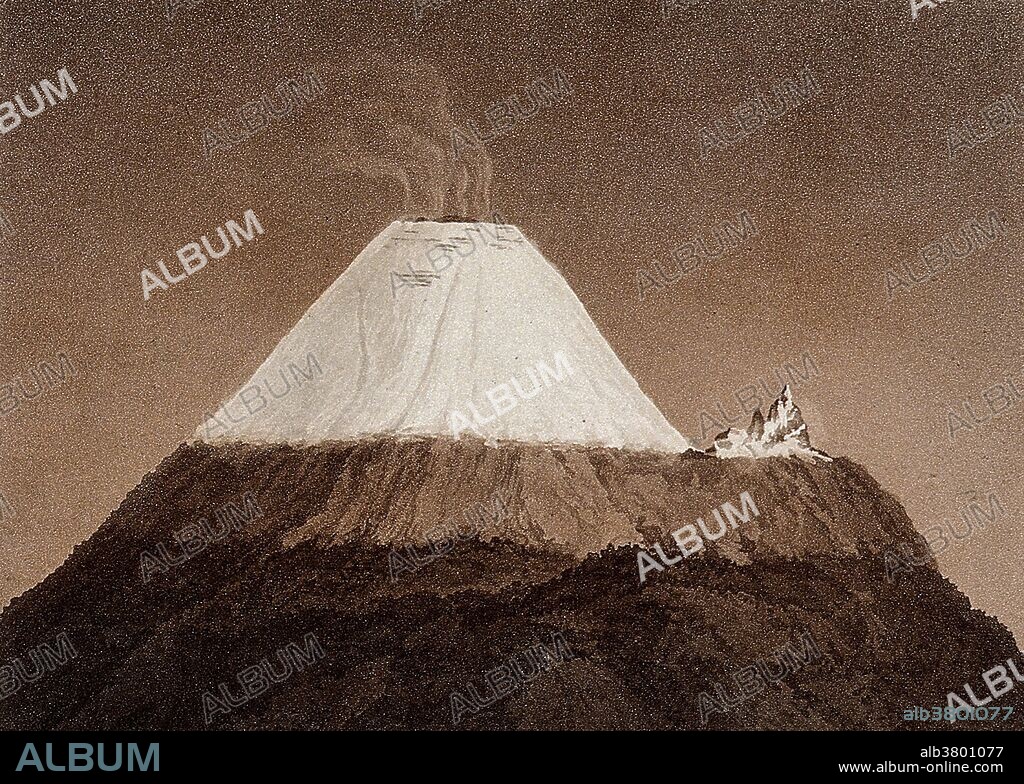alb3801077
Mount Cotopaxi, after Humboldt, early 1800s

|
Zu einem anderen Lightbox hinzufügen |
|
Zu einem anderen Lightbox hinzufügen |



Haben Sie bereits ein Konto? Anmelden
Sie haben kein Konto? Registrieren
Dieses Bild kaufen.
Nutzung auswählen:

Titel:
Mount Cotopaxi, after Humboldt, early 1800s
Untertitel:
Siehe automatische Übersetzung
Mount Cotopaxi, Equador, snowcapped. Aquatint by F. Arnold after Johann Georg Gmelin after Alexander von Humboldt. Humboldt (1769-1859) was a Prussian geographer, naturalist and explorer. Between 1799 and 1804, Humboldt travelled extensively in Latin America, exploring and describing it for the first time in a manner generally considered to be a modern scientific point of view. His quantitative work on botanical geography laid the foundation for the field of biogeography. His description of the journey was written up and published in an enormous set of volumes over 21 years. He was one of the first to propose that the lands bordering the Atlantic Ocean were once joined (South America and Africa in particular). Later, his five-volume work, Kosmos (1845), attempted to unify the various branches of scientific knowledge. He thought an approach to science was needed that could account for the harmony of nature among the diversity of the physical world.
Bildnachweis:
Album / Science Source / Wellcome Images
Freigaben (Releases):
Model: Nein - Eigentum: Nein
Rechtefragen?
Rechtefragen?
Bildgröße:
3600 x 2570 px | 26.5 MB
Druckgröße:
30.5 x 21.8 cm | 12.0 x 8.6 in (300 dpi)
Schlüsselwörter:
ERKUNDUNG • GEOGRAFIE • GEOGRAPHIE • GEOLOGIE • ILLUSTRATION • ILLUSTRATIONS • LANDSCHAFT • LATEINAMERIKANISCH • VULKAN
 Pinterest
Pinterest Twitter
Twitter Facebook
Facebook Link kopieren
Link kopieren Email
Email
